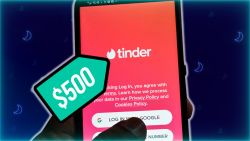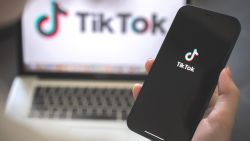Evan Spiegel opened up Snapchat in more ways than one this week.
Spiegel, who doesn’t often talk about the company’s strategies or his personal life, showed off a new side to himself and the company at Snap’s first ever Partner Summit on Thursday.
Dressed in typical Silicon Valley attire — in this case, a black hoodie, black jeans and bright white sneakers — the Snap CEO wandered freely around the Los Angeles-based event, which highlighted new product and business announcements. Spiegel mingled with attendees, mostly developers, press, advertisers and content partners, and tested out some of Snapchat’s latest augmented reality features in its demo areas.
Unlike many executives at major tech companies, he made himself accessible to the crowds without a pack of handlers.

The openness mirrored changes happening at his company, which has long been considered a walled garden. Snapchat doesn’t have a news feed where users can share outside links or content. Everything has taken place within the confines of the app, and publishers who want to create content must be vetted and approved by Snap’s team.
At the event, Snap (SNAP) announced a way for its own advertisers to reach users outside of the Snap (SNAP)chat app for the first time with its new Snap (SNAP) Audience Network.It hopes this marks a new era that will allow advertisers to broaden their reach and give Snap (SNAP) new revenue opportunities.
For example, a clothing brand could now use Snap Ads to reach a target demographic outside of Snapchat — a tactic other platforms like Twitter (TWTR) and Facebook (FB) already do. But Snap claims the tool won’t compromise user privacy.
Snap also announced a new feature called App Stories that allows Snapchat users to post videos and photos that disappear after 24 hours to other sites and apps for the first time.This means Snapchat users will be able to post a Story directly to their Tinder profile, starting this summer. The movecould encourage more users to post Stories, or sign up for the Snapchat app.
“Stories are an engaging way to experience content and to gain a closer, more authentic connection with the person or entity behind that content,” said Debra Aho Williamson, principal analyst at eMarketer. “So for Snapchat to extend stories outside of its app’s walls makes it easier for people to engage with it even when they aren’t on Snapchat.”
Snap is dealing with stagnant user growth and heightened competition from Instagram, which has been successful in mimicking some of Snapchat’s most popular features. Instagram’s version of Stories recently hit 500 million daily users compared to Snapchat’s 186 million total daily users. Snap is looking for new ways to attract users and boost brand awareness and engagement. This week’s announcements could help.
Snap not only faces a challenge in trying to grow users, but also to prove that it can get anywhere near being profitable after a history of pretty steep losses. Spiegel has a “stretch goal” to become profitable in 2019.
Since taking Snap public in March 2017, Spiegel has acknowledged he needed to do a better job of communicating updates about his company. At Vanity Fair’s New Establishment Summit in 2017, he said: “One of the things I did underestimate was how much more important communication becomes to investors.”
Spiegel used Thursday’s event to broadcast some of the company’s priorities and strategies not only to investors but to its users.
Following last year’s controversial redesign of the Snapchat app, which separated content from friends and publishers, Spiegel told CNN Business he has since learned to be more open about big product changes. Some users were upset by the new interface and abandoned the app.
Spiegel famously told Bloomberg Businessweek in 2015 “these are the kinds of questions I hate, dude” when asked about his long-term vision for the company. But perhaps this week marked the start of a new Snap and Spiegel.

























